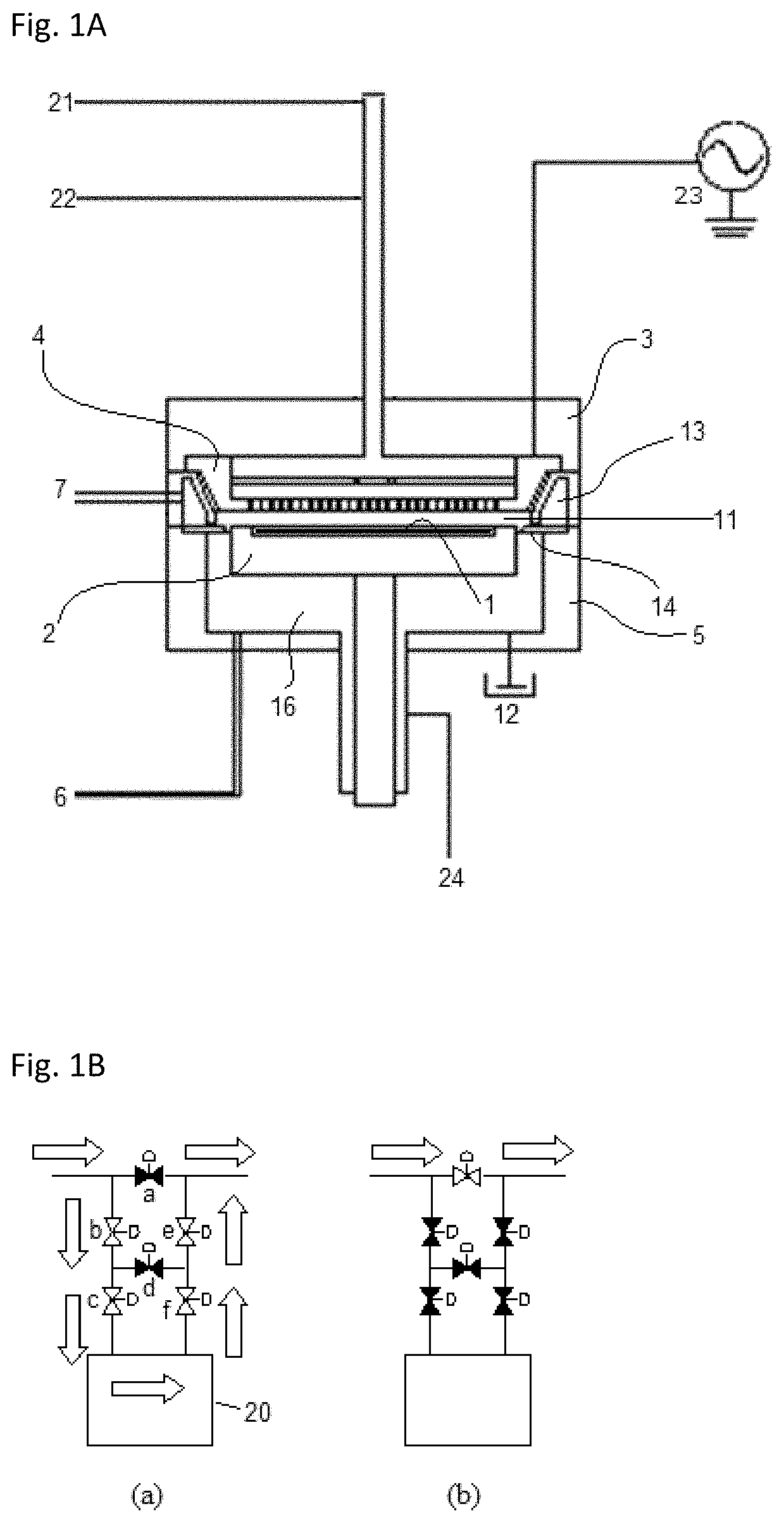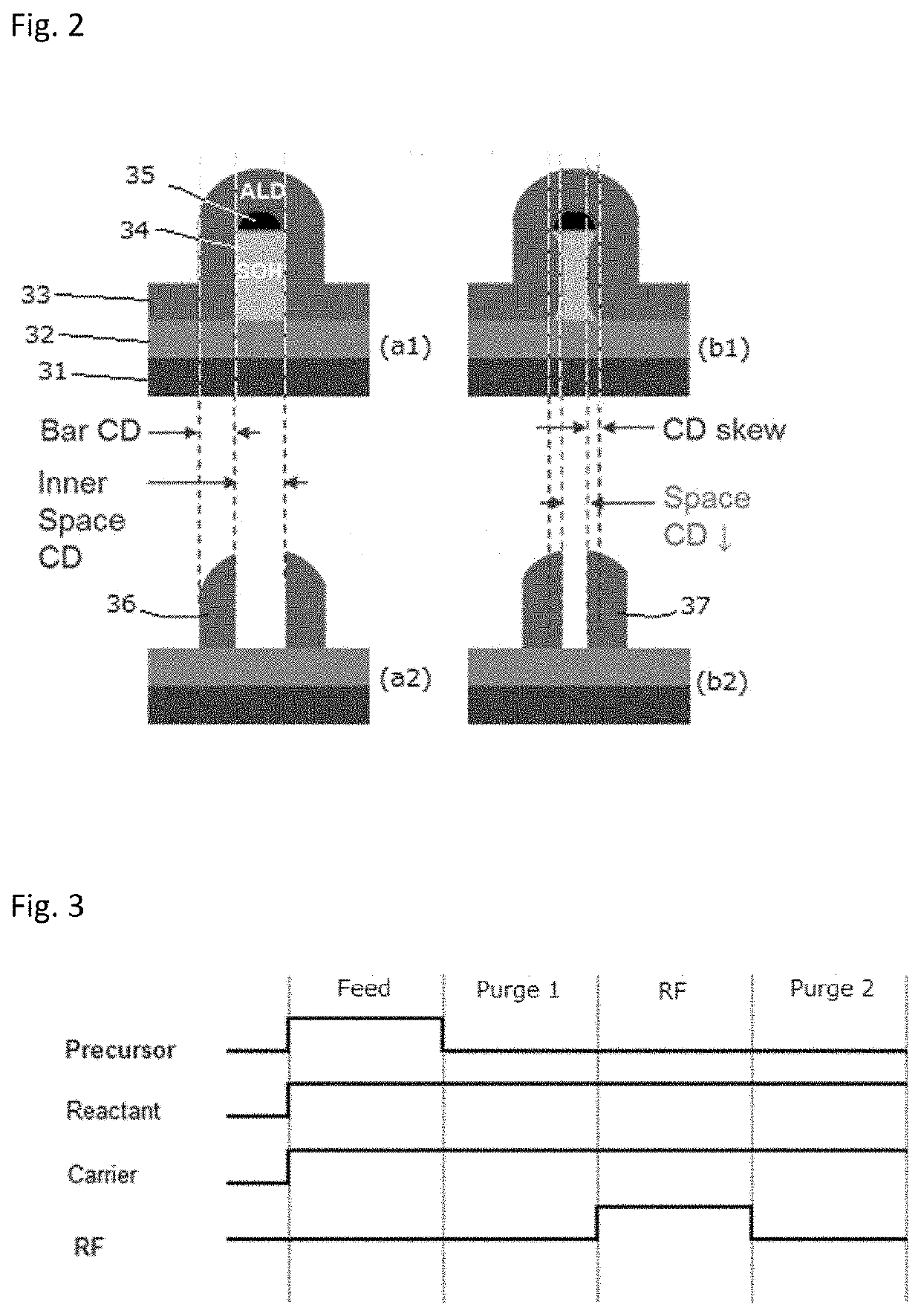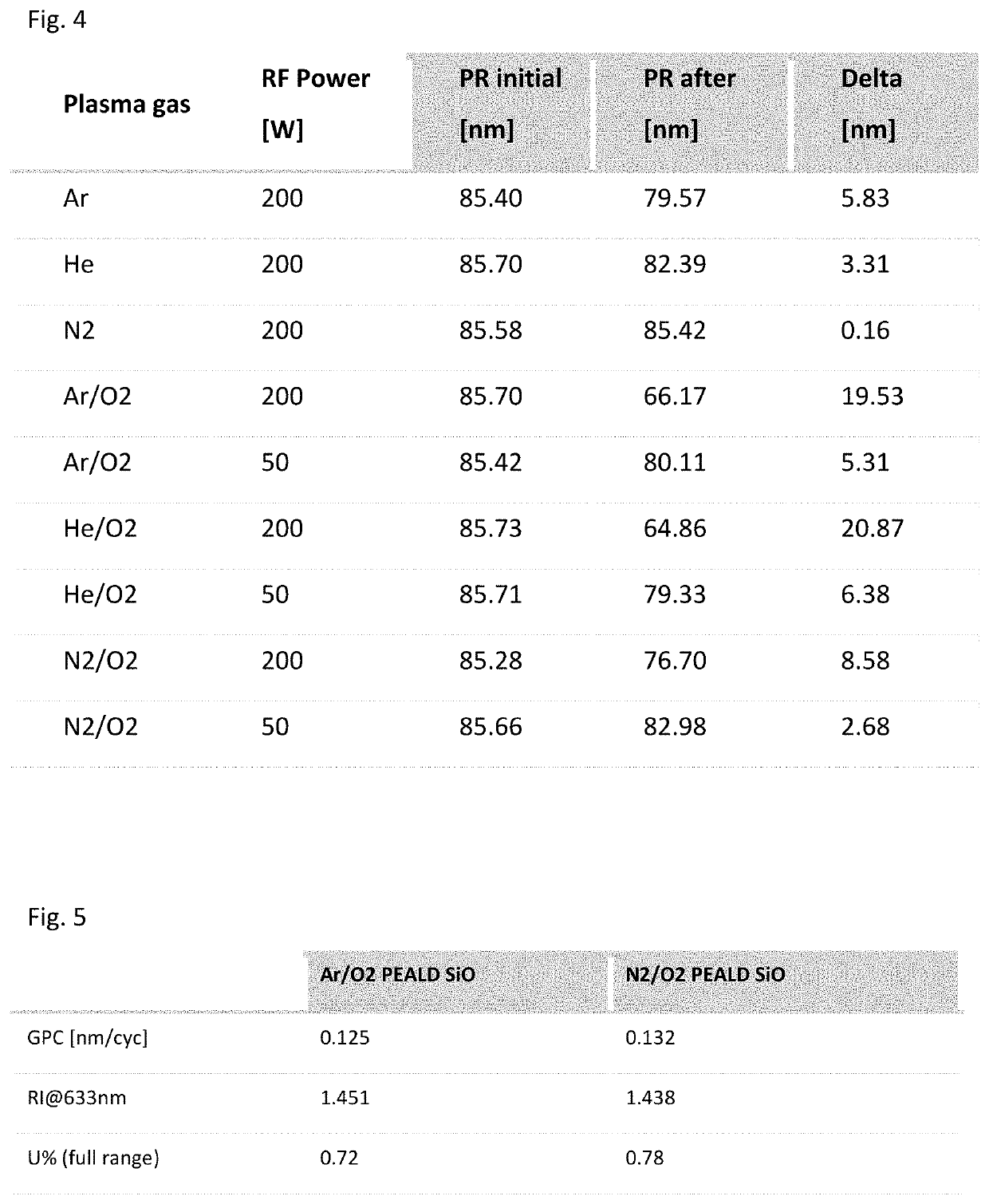Method for depositing oxide film by peald using nitrogen
a technology of oxide film and nitrogen, which is applied in the direction of chemical vapor deposition coating, coating, electric discharge tube, etc., can solve the problems of difficult control of patterning size in a desired range, inability to ignore the above problem in the process of next generation devices, and the adverse effect of etching of photoresis
- Summary
- Abstract
- Description
- Claims
- Application Information
AI Technical Summary
Benefits of technology
Problems solved by technology
Method used
Image
Examples
reference example 1
[0060]A photoresist layer (a blanket photoresist constituted by e.g., Novolacs designed for Argon Fluoride laser (ArF) lithography) was formed on a 300-mm substrate at a thickness which was considered to be an initial CD (“PR initial”) shown in FIG. 4, and then the substrate was loaded to an apparatus illustrated in FIG. 1A. The photoresist layer was exposed to a plasma using a gas shown in FIG. 4 (‘Plasma gas”) generated by applying RF power (13.56 MHz) shown in FIG. 4 (“RF Power”) under conditions shown in Table 2 below to evaluate plasma damage to the photoresist layer by measuring a reduction of the thickness of the layer after being exposed to the plasma. The results are shown in FIG. 4.
TABLE 2(numbers are approximate)Conditions for plasma exposureResist materialArF resistTemperature75° C.Pressure400 PaPlasma gasSee FIG. 4Plasma gas flowAr, He, N2 = 2 SLM;O2 = 0.5 SLMRF power for a 300-mm waferSee FIG. 4Duration10 secondsElectrode gap10 mm
[0061]As shown in FIG. 4, although all ...
reference example 2
[0062]A silicon oxide film (a blanket film) was deposited on a 300-mm substrate by PEALD in an apparatus illustrated in FIG. 1A with a flow-pass system (FPS) illustrated in FIG. 1B under conditions shown in Table 3 below to evaluate properties of a silicon oxide film deposited using an Ar / O2 plasma and those of a silicon oxide film deposited using a N2 / O2 plasma. The results are shown in FIG. 5.
TABLE 3(numbers are approximate)Conditions for PEALDTemperature of susceptor / 75° C. / 75° C. / 75° C.showerhead / wallElectrode gap10 mmPressure400 PaPrecursorBDEASReactantO2Carrier gas / Dilution gasEither Ar or N2Flow rate of reactant (continuous)500 sccmFlow rate of carrier gas (continuous)2 slmFlow rate of dilution gas (continuous)1 slmFlow rate of precursorCorresponding to the flow rate of carrier gasRF power (13.56 MHz) for a50 W300-mm waferDuration of “Feed”0.2 secDuration of “Purge 1”0.5 secDuration of “RF”0.4 secDuration of “Purge 2”0.1 secDuration of one cycle1.2 sec
[0063]As shown in FIG. 5...
reference example 3
[0065]Silicon oxide films were deposited on substrates, respectively, in a manner similar to that in Reference Example 2 under conditions shown in Table 4 blow. Thus-obtained silicon oxide films were subjected to composition analysis based on a Fourier Transform Infrared (FTIR) spectrum.
TABLE 4(numbers are approximate)Sample cSample aSample bO2(20%) / ArO2(20%) / N2O2(5%) / N2PrecursorBDEASSusceptor (° C.)75Wall (° C.)75Shower plate (° C.)75Feed / Purge / RF / Purge0.2 / 0.5 / 0.4 / 0.1 sPower (W)50Pressure (Pa)400 Gap (mm)10N2 (slm) Including033CarrierAr (slm) Including300CarrierO2 (slm)0.50.50.1Number of cycles100 (~12 nm)
[0066]FIG. 7 is a Fourier Transform Infrared (FTIR) spectrum of a SiO film formed in sample a, sample b, and sample c. As shown in FIG. 5, all the silicon oxide films show a SiO main peak, indicating that all the films were constituted by 5i0. Samples a and b had a weak peak at about 900 cm-1 which may be attributed to the presence of impurities such as NH2 and CH2, but is not bel...
PUM
| Property | Measurement | Unit |
|---|---|---|
| Time | aaaaa | aaaaa |
| Flow rate | aaaaa | aaaaa |
| Flow rate | aaaaa | aaaaa |
Abstract
Description
Claims
Application Information
 Login to View More
Login to View More - R&D
- Intellectual Property
- Life Sciences
- Materials
- Tech Scout
- Unparalleled Data Quality
- Higher Quality Content
- 60% Fewer Hallucinations
Browse by: Latest US Patents, China's latest patents, Technical Efficacy Thesaurus, Application Domain, Technology Topic, Popular Technical Reports.
© 2025 PatSnap. All rights reserved.Legal|Privacy policy|Modern Slavery Act Transparency Statement|Sitemap|About US| Contact US: help@patsnap.com



